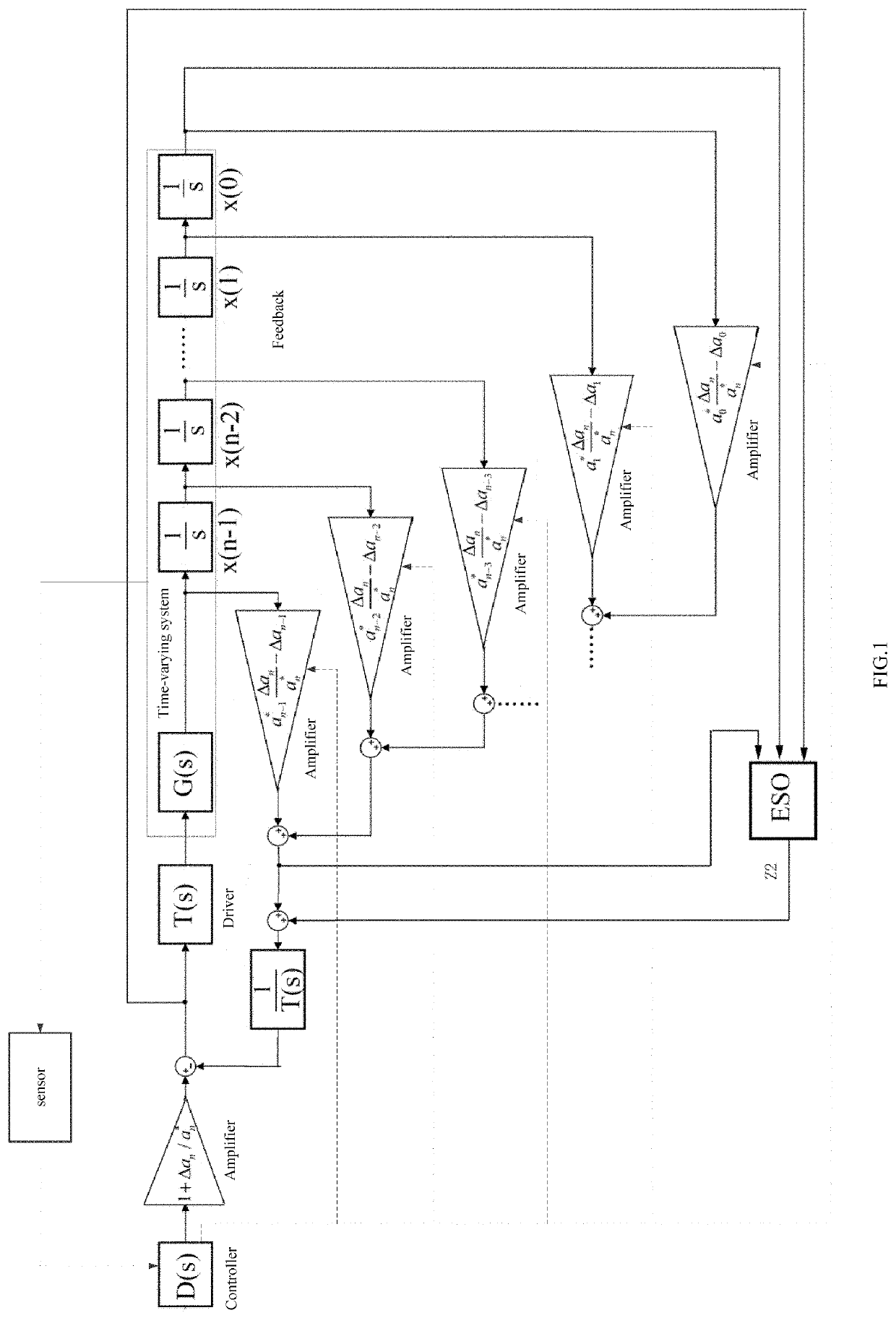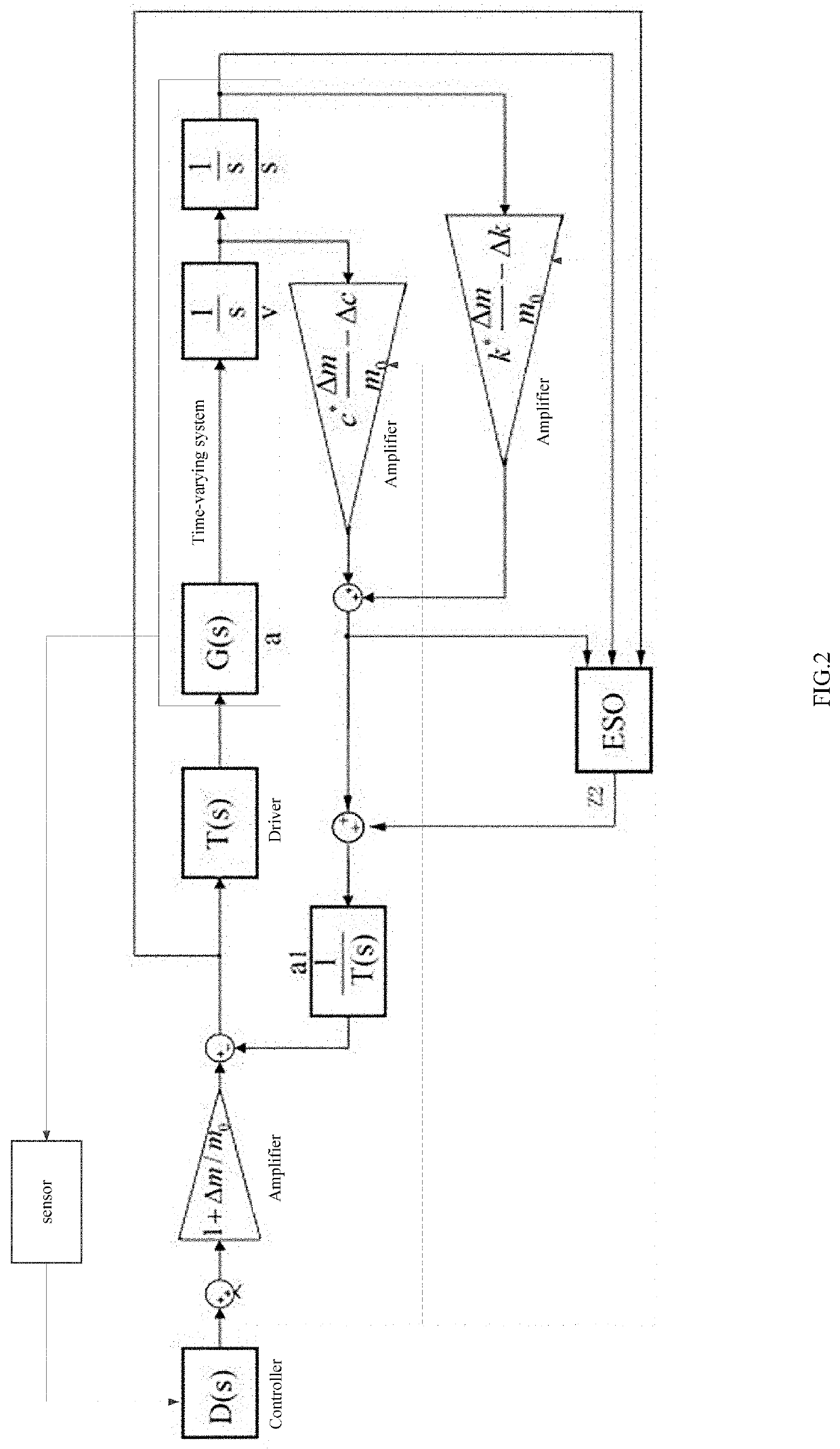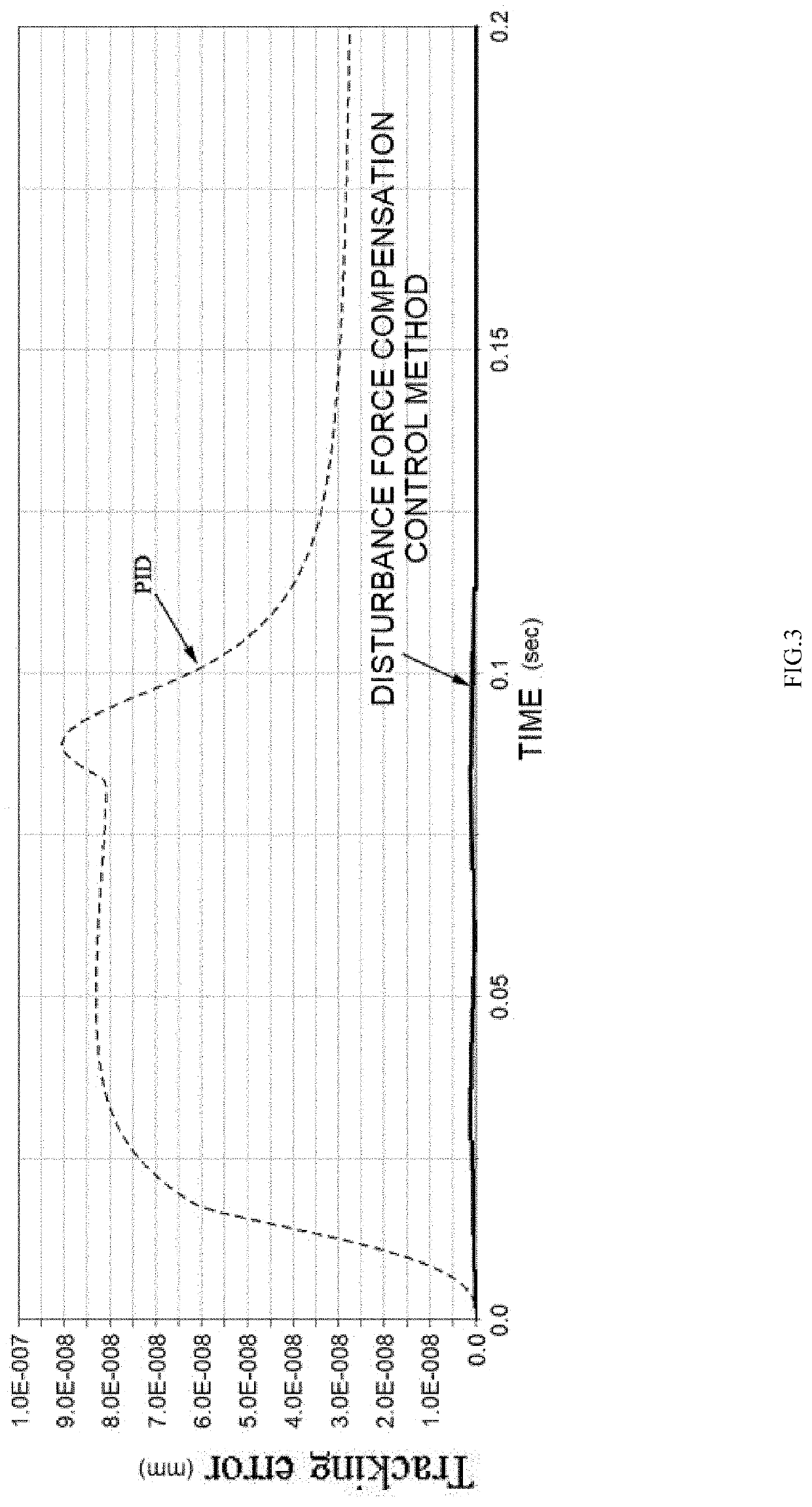Control method for converting time-varying system into time-invariant system
- Summary
- Abstract
- Description
- Claims
- Application Information
AI Technical Summary
Benefits of technology
Problems solved by technology
Method used
Image
Examples
embodiment 1
[0044]Referring to FIG. 2, the embodiment in the present invention takes a second-order system generally applied in mechanical engineering as an example, and a specific expression of the control system is:
m0{circumflex over (x)}(t)+c0x(t)+k0x(t)=u0(t) (1)
[0045]When a parameter of the controlled object (time-varying system) changes, the specific expression will become:
(m0+Δm){umlaut over (x)}(f)+(c0+Δc){dot over (x)}(t)+(k0+Δk)x(t)=u0(t) (2)
[0046]Since a control quantity u0(t) is obtained according to a deviation and is not directly related to the parameter of the controlled object, the changes of the parameter will lead to changes in the speed of the state change. In order to keep the speed of the state change unchanged, the control quantity needs to be compensated.
[0047]Multiply both sides of expression (1) by
m0+Δmm0
to get the following expression:
m0+Δmm0m0x¨(t)+m0+Δmm0c0x.(t)+m0+Δmm0k0x(t)=m0+Δmm0u0(t)
[0048]Organize the above formula to get the following expression:
(m0+Δm)x¨(t...
embodiment 2
[0056]The second order system of dual-mechanical arm is taken as an example in the present invention, the equation expression of specific joint control, is:
J1{umlaut over (θ)}1B1{dot over (θ)}=T1 (5)
[0057]The changes of the joint pose lead to the changes of the inertia of joint 1, the expression is:
(J1+ΔJ1){umlaut over (θ)}1+B1θ=T1 (6)
[0058]By multiplying both sides of the original model by
J1+ΔJ1J1,
the following expression can be obtained:
J1J1+ΔJ1J1θ¨1+B1J1+ΔJ1J1θ.=J1+ΔJ1J1T1(7)
[0059]Organize the expression (7) into a model with a parameter changed to obtain the following expression:
(J1+ΔJ1)θ¨1+B1θ.=J1+ΔJ1J1T1-B1ΔJ1J1θ.(8)
[0060]The value of AB in second order system model of dual-mechanical arm in the embodiment is 0.
[0061]As can be seen in expression (8), the compensation part of the measured disturbance is
-B1ΔJ1J1θ..
[0062]By adopting extended state observer, assign b the value
J1J1+ΔJ1
to further compensate the disturbances.
[0063]The second order ESO which could estimates the sp...
PUM
 Login to View More
Login to View More Abstract
Description
Claims
Application Information
 Login to View More
Login to View More - R&D
- Intellectual Property
- Life Sciences
- Materials
- Tech Scout
- Unparalleled Data Quality
- Higher Quality Content
- 60% Fewer Hallucinations
Browse by: Latest US Patents, China's latest patents, Technical Efficacy Thesaurus, Application Domain, Technology Topic, Popular Technical Reports.
© 2025 PatSnap. All rights reserved.Legal|Privacy policy|Modern Slavery Act Transparency Statement|Sitemap|About US| Contact US: help@patsnap.com



